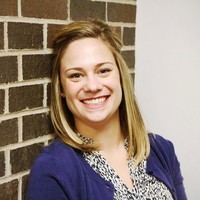
Updated 7:58 p.m., Feb. 22, 2023.
The person accused of shooting at an LGBTQ nightclub in Colorado Springs visited the club six different times before opening fire there last year, killing five people and injuring at least 19 others, according to police testimonies during the first day of a preliminary hearing in El Paso County.
The suspect, 22-year-old Anderson Lee Aldrich, accused of a shooting at Club Q, is facing more than 320 charges including first-degree murder, attempted murder and bias-motivated crimes or hate crimes.
Survivors and families of victims filled up the entire left side of the small courtroom. Some could be heard lightly sobbing as witnesses took the stand and photos from the scene of the shooting were shown.
Aldrich was also present in the courtroom, shackled at the ankles and wearing bright orange jail attire. The back of the suspect's head appeared scarred. The night of the shooting, patrons said they beat and tackled Aldrich to the floor.
Prosecutors on Wednesday brought four witnesses to the stand — all officers and detectives from the Colorado Springs Police Department who worked on the case. Investigators said the night of the shooting, Aldrich first came to Club Q shortly after 10 p.m. and stayed for a while before leaving. Aldrich returned and began opening fire on patrons sometime before 12 a.m., Nov. 19.
Defense attorney Joseph Archambault on Wednesday presented evidence that focused on Aldrich’s mental health struggles.
Witnesses take the stand
The prosecution’s first witness, Officer Connor Wallick of the Colorado Springs Police Department, said he was near the Citadel Mall when he received a call about a shooting.
He said he arrived at the scene within minutes.
Wallick said he could smell gunpowder upon entering the club. After passing through the club's bar area and dance floor, Wallick said he saw the suspect on the ground wearing body armor. He said another person was on top of the suspect, holding a gun in his hand.
Some patrons of Club Q, including army veteran Richard Fierro, have spoken publicly about tackling the shooter and working with others in the club to subdue the suspect.
Wallick said Aldrich tried to blame the shooting on others in the club and refused to provide identification or cooperate with commands.
Aldrich appeared to cry in court and rocked back and forth as prosecutors showed images from the night of the shooting. A defense attorney comforted Aldrich by patting their shoulder and said, “It’s OK.”
Others in the courtroom also gasped and sobbed quietly as the pictures were displayed.
A police search of the suspect's apartment found more ammunition and shooting targets, including one with rainbow colors
Witness Detective Jason Gasper said there was an explosive device known as a flash bang attached to the suspect's ballistic vest, as well as a pistol. The shooter carried an AR-style rifle and multiple magazines when entering the club. Evidence tags seen in photos from the night of the shooting showed dozens of shell casings scattered throughout the building.
Gasper also testified about a police search of Aldrich's apartment. He said they found shooting targets with bullet holes, various items used to build guns, as well as ammunition. One of the targets had rainbow colors emanating from a bullseye in the middle. Officers also said they found a hand-drawn map of Club Q in the apartment.
On cross-examination, Gasper was questioned about Aldrich's gender identity, including a statement the suspect allegedly made in the hospital about being nonbinary. Gasper said, in initial searches of Aldrich's possessions or home, he did not see any documents containing statements against the LGBTQ community.
A third witness, Detective Ashton Gardner, testified that Thomas James, another patron inside the club, was the first to approach Aldrich the night of the shooting. James grabbed the barrel of a gun and tackled Aldrich. Despite being tired and shot in his torso, James held his position until emergency officials arrived, Gardner said. Another patron, Richard Fierro, helped to tackle and disarm Aldrich.
Prosecutors also asked Gardner about surviving victims who helped move others to safety. Some helped put pressure on wounds until EMTs and other first responders arrived.
Gardner gave detailed accounts from survivors of the shooting, outlining their injuries and where they were when the gunfire began. Many suffered multiple gunshot wounds.
The suspect again became emotional during the testimony and left the room crying when the hearing was called into recess.
A history of hate online and past trips to Club Q
The lead detective in the case, Rebecca Joines, testified that the suspect had been to Club Q six times over the course of about a year, buying drinks, doing karaoke and attending a drag show.
An online friend told police that Laura Voepell, Aldrich’s mother, forced Aldrich to go to gay bars. Police were informed that Voepell identified as nonbinary. That same friend also said Aldrich was obsessed with homicide and the Nazis. They said Aldrich hated police, minorities and LGBTQ people.
Police said Aldrich's driver's license and vehicle were found in the Club Q parking lot the night of the shooting. There was a baseball cap in the front seat of the car, with a cell phone duct-taped to the bill — the camera facing out. Prosecutors said this was evidence Aldrich planned to live stream the shooting through an app. They said Aldrich also had a QR code on the front of a ballistic vest worn doing the shooting.
The defense focused largely on Aldrich's mental health. They showed photos of nearly a dozen prescriptions written for the suspect for things like schizophrenia, bipolar disorder and anxiety. There was also a prescription for suboxone, a medicine used to treat opioid addiction.
Officers also said they found a note on a yellow pad of paper in the suspect’s apartment. In child-like handwriting, the note reads: “Please relieve me of my own fate. I'm drowning in my own wake. How long must I wait for you to rid me of this hate?”
Both prosecutors and defense acknowledged in court Wednesday that they weren’t sure who wrote the note, however.
Fourth Judicial District Judge Michael McHenry will determine if there is enough evidence to support the charges against Aldrich at the conclusion of the hearings, which are anticipated to end on Thursday.
Previous coverage of the Club Q suspect in court:
- El Paso County judge denies another motion to push back preliminary hearing for the suspect in the Club Q shooting
- Club Q Update: Judge denies defense attorneys their request for a delay in preliminary hearing
- Judge denies motion to hold El Paso County Sheriff’s Office in contempt for Club Q media leak
- Club Q shooting: DA files a motion for additional charges against suspected shooter, including attempted murder









